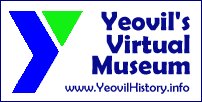Yeovil at War
Yeovil's Starfish Site, Sf42
and the Closworth Civil Bombing Decoy Site
As part of the air defences during the Second World War, Britain's decoy programme began in January 1940 and developed into a complex deception strategy, using four main methods: day and night dummy aerodromes (`K' and `Q' sites); diversionary fires (`QF' sites and `Starfish'); simulated urban lighting (`QL' sites); and dummy factories and buildings.
Starfish sites were large-scale night-time decoys created during the Blitz to simulate burning British towns and cities. The aim was to dupe German night bombers and divert them from their intended targets so they would drop their bombs over largely empty countryside.
The sites were an extension of former Royal Engineer Colonel John Turner's decoy programme for airfields and factories (code named "Q" Sites) such as marking out Yeovil's Westland airfield with oil on the grass to simulate hedgerows. Following the bombing, and near destruction, of Coventry in November 1940, Turner was brought out of retirement and tasked with creating decoys for major cities. Turner referred to the new sites as 'Special Fire' or 'SF' sites. One early site near Bristol was given the name 'Starfish', which subsequently became used for all of the decoys. The Starfish sites were set up in 1940 by the National Decoy Authority under the direction of Colonel Turner. Almost overnight sites were sealed off and sentries posted.
One such site was on Black Down, the highest point on the Mendip hills and was the largest in England, its remains are still seen today where small, regularly-spaced 'clumps' lining the footpaths, the remnants of the site, are still to be seen.
The sites were usually built two or three miles (although in Yeovil's case about one mile) from their protection target, and at least 800 yards from any other settlement. They consisted of elaborate light arrays and fires, controlled from a nearby bunker and laid out to simulate a fire-bombed town.
The Yeovil Starfish bombing decoy, designated 'SF42', was built to deflect enemy bombing from Yeovil airfield.
Initially it functioned as a 'Q-type' night decoy, which displayed a series of lights to simulate an active airfield. It was later equipped with a 'QF' decoy to protect the Westland aircraft factory. The 'QF' decoy consisted of a series of controlled fires lit during an air raid to replicate a target struck by bombs.
To power the site a bunker was built and fitted with three Coventry Climax petrol engines to power the generators feeding all the lighting on the site. The bunkers were manned 24 hours every day with just basic living accommodation. The Starfish site needed a complement of 24 personnel to operate fully and to be prepared for re-use soon after being fired. Its maintenance, operation, etc. was under the control of 957 Squadron, 80 Wing, of the Royal Air Force.
During 1941 a 'Permanent Starfish' decoy was implemented to deflect bombing from the town of Yeovil. A 'Starfish' decoy was a larger-scale 'QF' decoy designed to look like a town targeted by enemy bombs. The Starfish was recorded as being operational from 1 August 1941.
By 1942 the site had become the location of a 'QL' light decoy as part of the 'C-series' of civil decoys to protect the Westland aircraft factory. This 'QL' decoy simulated the factory lighting and locomotive glows that would be present at Westland Aircraft during a poor blackout.
Yeovil's site, classified as a 'Minor Starfish' (relative to larger sites such as those protecting Bristol), was constructed on Camp Hill between Brympton and West Coker. The site is recorded as being in use until 8 April 1943. Aerial photography shows that by 1946 the site had been given over to agricultural use and no features of the decoy survive.
A further 'C-series' civil decoy for Yeovil was located at Closworth - see below.
|
The following
is taken from a
'Report on
Decoys' dated
23rd January
1941 - The Starfish will be constructed in 3 steps. The first step consists of the ‘initial fire’ containing about 10 tons of inflammable material with the necessary steel scaffolding and tanks. 30 tons has to be brought to the site to allow for 2 reserves. The second stage consists of the building up of these fires to 25 ton units. Two 25 (ton) units will be erected on each site with accessories and the inflammable material for a third 25-ton kept in reserve. The third stage is to build up the fires to 50 ton units with 2 reserves as before. As each fire is burnt another reserve is arranged. Building up of existing initial fires is in progress under several special contractors. It will be realised, however, that their speed is governed by the number of times fires are set off. The larger the fire, the more to replace, but only large fires can guarantee success. |
The typical Starfish site would contain a mix of different types of fire to simulate the various stages of a burning town. These were -
Many clusters of ‘Basket Fires’ in the main operational area. These were typically 3-feet square wooden crates on legs, lined with wire netting and filled with layers of highly flammable but cheap materials such as scrap wood, shavings, sawdust and pine clippings, with a gallon of creosote spread between each layer. Covered in netting and hessian and topped with roofing felt, there would be dozens arranged in groups. When ignited, they would look from the air like houses on fire. Most would be ready to ignite electrically, but adjacent ones would catch fire as the conflagration spread – aided by ‘flare cans’ containing 4 gallons of creosote linked to the cages with wicks. The effect would last well over an hour.
‘Crib Fires’ – large cages with flare cans underneath, with a layer of firewood and topped with coal, to give a longer burn – up to 4 hours.
‘Boiling Oil Fires’ – heavy steel troughs with half a ton of coal mixed with creosoted waste, topped with steel trays. Diesel or gas oil would be fed from one tank, while water would intermittently be fed from another to give a varied pyrotechnic display.
‘Grid Fires’ – a header tank of liquid fuel would be sent down a sprinkler pipe to a grid of fire elements stretched over about 12 yards, and producing a vivid yellow flame.
By the end of the war there were 237 decoys protecting 81 towns and cities around the country. It has been estimated that, overall across the UK, decoys of all types probably deflected over 2,000 tons of bombs, equating to several thousand lives saved during the course of the war.
See also Camouflaging Yeovil
gallery
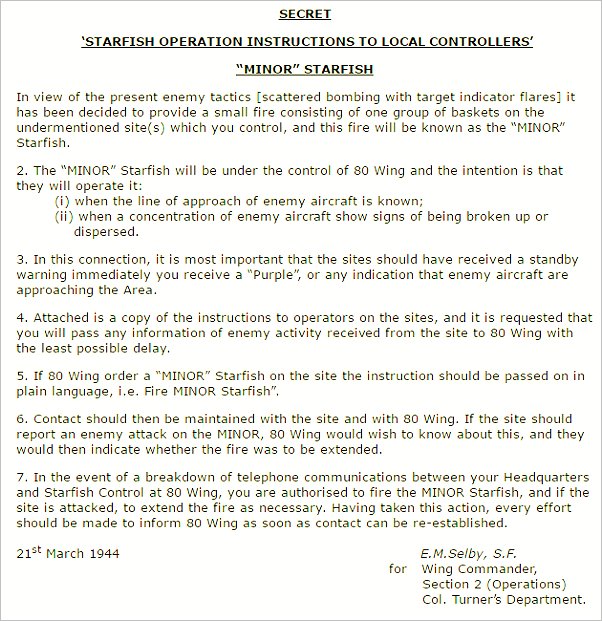
Operational procedures issue to Starfish site controllers, 21 March 1944.
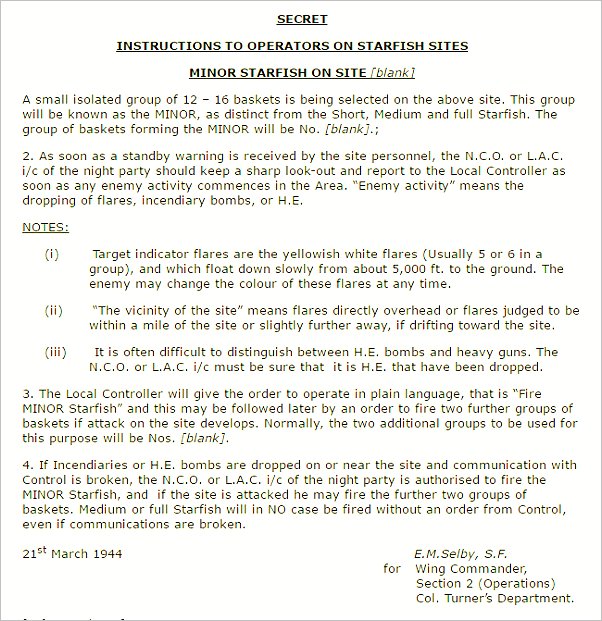
.... and operational procedures issue to Starfish site operators of the same date.
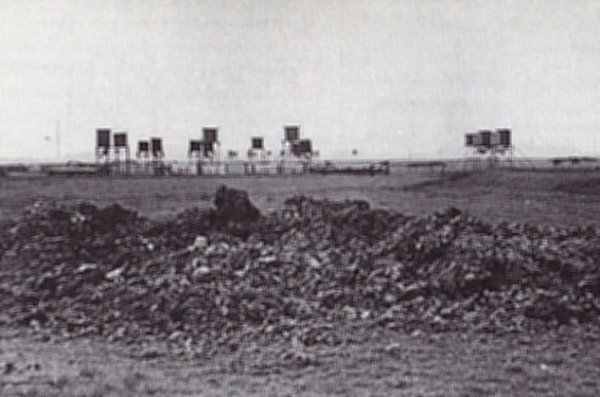
An unknown Starfish site, photographed ready for action.
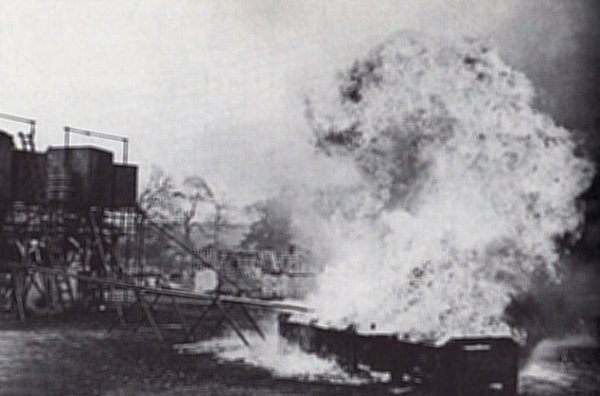
A controlled oil fire at an unknown Starfish site.

An unknown Starfish site in full blaze.
The Closworth Decoy site, C30a
At Closworth, Dorset, 3.5 miles southeast of Yeovil, was the second of the two decoy sites protecting the Westland aircraft factory and the town of Yeovil itself. This was a 'C' series Civil Bombing decoy site, designated C30a.
The site functioned as both a 'QF' (dummy aerodrome) and 'QL' (simulation of urban lighting) decoy. The 'QF' decoy consisted of a series of controlled fires lit during an air raid to replicate a target struck by bombs. The 'QL' decoy displayed simulated lighting to reconstruct the Westland factory and the town of Yeovil. The site is recorded as being operational between 1942 and 1943.
The control building, originally covered with an earthen mound to camouflage it from the air, survives at the site, complete with blast walls protecting its entrance, in fair condition. The control building would have housed an operations room and provided the decoy crew with shelter.
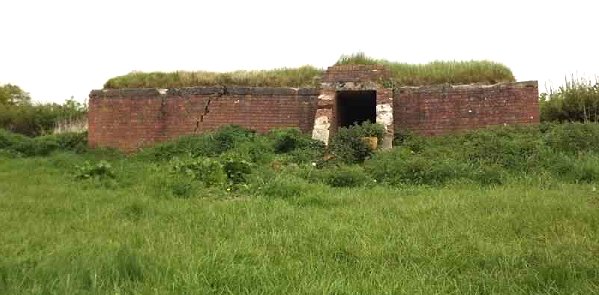
The Closworth 'C' series Civil Bombing decoy site's control building, showing the entrance.
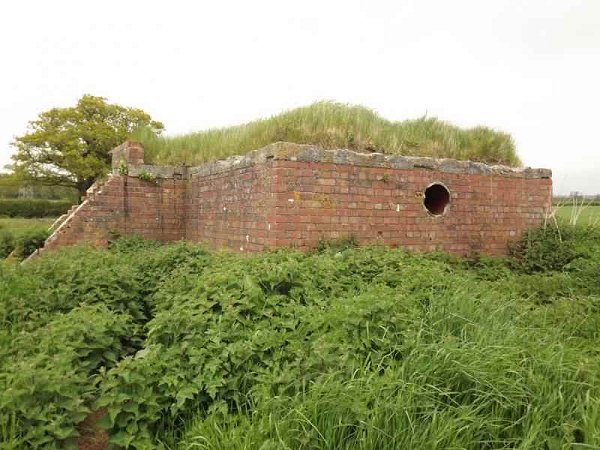
.... and a side view.
